Best Sauna Temperature and Humidity for Finnish Sauna Health Benefits
Traditional Finnish Saunas allow you to ladle water on the rocks to create steam. This releases a burst of humidity in the sauna, which cycles between wet and dry. We know it’s confusing, but a wet and dry sauna is actually the same thing.
But how do you get the temperature and humidity just right? What do they do in Finland, and what’s the best temperature for health benefits? Let’s dig in.

Finnish Sauna Traditional Temperature and Humidity
158°F to 212°F is the typical range of a family sauna in Finland, measured at head level. There can be a large temperature difference between your head and toes though. We’ll discuss later how to get those temps more even for a much more comfortable sauna environment.
But that’s only half of the story.
In a traditional sauna, the temperature and humidity levels interact and influence each other directly. Both can be increased by splashing water on the rocks, creating steam, or löyly – an essential flow of heat and humidity for ideal sauna conditions.
When you splash water on sauna rocks, water vapor transfers heat energy from the rocks to the surrounding air, raising both the sauna temperature and humidity levels. In Finland, people don’t ask each other if the sauna temperature was good. They ask if the Loyly was good.
But how hot should a sauna be? What’s the best humidity level for an authentic Finnish sauna?
While everyone has different preferences, a traditional sauna will be 170-200 degrees Fahrenheit with a humidity range between zero and thirty percent. A sauna is not have a static temperature but a range throughout the session.
We recommend the ‘Rule of 200’ to determine the perfect balance of heat and humidity for a comfortable sauna experience with all the health benefits.
Ideal Temperature For a Sauna – Use the Rule of 200
Due to their interdependence, the ideal sauna temperature and humidity level must be achieved together. We recommend using an old Finnish ‘Rule of Thumb’ to achieve the perfect temperature, including humidity – known as the ‘Rule of 200.’
The “Rule of 200” says the sweet spot for most people is when the Temperature and Relative Humidity equals 200 degrees Fahrenheit. The theory rests on the idea that a bather’s comfort is a function of temperature and humidity.
So if the temperature is 165 F, there could be up to 35% humidity before some sauna users feel uncomfortable. As the temperature rises, the humidity should go down, which will happen naturally.
You may notice that 200 (t+rh) is a natural sweet spot for your sauna. As the temperature rises, you must make a lot of steam to keep the relative humidity above 30% (if you have proper ventilation). The amount of water vapor air can hold increases significantly as you approach 200 degrees.
Where To Measure From
“That which gets measured gets managed,” and we recommend monitoring the sauna temperature and humidity levels from the bathers head level to ensure things don’t get out of hand.
And the placement of the Thermometer and heat gauge can make a HUGE difference. A good sauna hat can help your head handle the additional heat, but that’s not a good long-term solution.
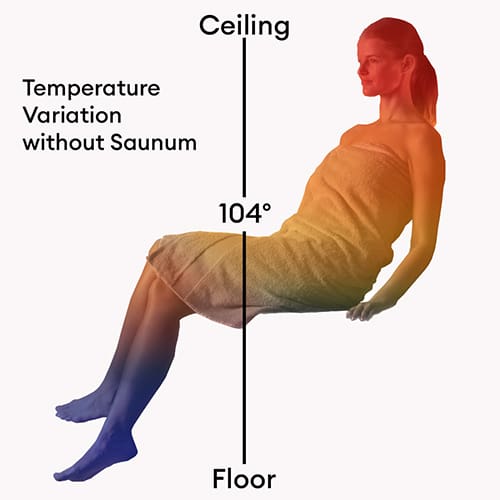
It’s common in modern saunas to have cold feet and a cooking hot head. The Saunum fixes this.
Modern saunas often have a big problem with air stratification. They do not have big chimneys and adequate ventilation systems so the hot air sits high and humidity accumulates. Worse, dangerous levels of CO2 can arise.
While ventilation should be added in these cases, a Sauna Air or Saunum AirSolo will completely solve the problem by circulating the air throughout the room.

Sauna Thermometer and Hygrometer
You need an accurate sauna thermometer and hygrometer combo to find the sweet spot. This one works well:
The Hygrometer, it becomes clear why some saunas seem way hotter or cooler than they are. It will become easy to have a perfect sauna at a lower temperature. And once you figure out your perfect sauna conditions, you can dial it in every time and even automate it.
Hot and Dry Sauna Benefits
Hot and Dry saunas are better for aiding the recovery of a workout by making muscles relax.
Very hot sauna sessions can also help condition the cardiovascular system to mimic actual exercise. If you’ve read about how sauna sessions have the same effects as working out, they are probably talking about hot, dry sauna sessions.
Hot, dry sauna sessions will also be the best way to get the healthy skin benefits of a sauna. Simply, hot, dry saunas create the perfect environment for sweating.
Sweating improves blood flow to the skin, removes dead skin cells, and can remove toxins.
How hot is too hot? The World Sauna Championships were discontinued after one finalist died and the other was sent to the hospital after spending 6 minutes at 110C (230F). Listen to your body; know your first few sessions might be short. Sauna is not a competition.
Steamy, Less Hot Sauna Benefits
Sauna is not a competition, and many consider the hot, dry sauna abrasive. They would prefer a gentler heat that they can stay in for longer and relax.
The löyly at softer temperatures is considered gentler and more therapeutic than in extremely hot saunas, where the water seems to explode as it hits the rocks.
Soft, steamy heat is also best if you use skin care products that you want to penetrate deep into your skin. The steam opens pores.
Gentler heat is also excellent for meditation, yoga, and other spiritual practices where heat is not the only focus.
If you have children or folks with medical conditions in the sauna, you will also want to start with a very soft heat.
About Relative Humidity
Relative humidity measures the ratio of water vapor at a given temperature. The amount of water vapor it can hold increases as the temperature rises.
People often confuse relative humidity with absolute humidity in saunas. Since we are measuring relative humidity, the sauna may not feel (or be, in absolute terms) any less humid as the temperature rises, even though relative humidity drops.
Getting it Right With Electric Stoves
Both electric and wood burning sauna stoves can be achieve ideal loyly, as long as the stove is powerful enough for the room and it has adequate rocks.
It’s important that the sauna rocks are heated first, and the rocks and steam heat the room. If you or the room are heated directly by the heating coils or fire, it will likely feel harsh or unpleasant.
Wood-burning saunas heat up faster and provide additional sounds and glows that add to the experience. You can find the best wood-burning sauna heaters here.
Infrared Saunas
Infrared saunas cannot reach 200 as a function of temperature (f) and relative humidity (rh). The maximum temperature range is 105-120 F and they do not offer humidity control.
Steam Bath Temperature
Steam baths are completely different from infrared or traditional dry saunas – extremely high humidity and relatively low temperature (around 130 degrees F). Learn more about steam baths and how they differ from saunas here.
Conclusion
Is the rule of 200 an exact science? Absolutely not. But it is a good way to consider how heat and humidity interact in the traditional sauna. HELO even includes it in their sauna heater manuals and guides.
Get on the bench (with a good thermometer/hygrometer) and experiment!




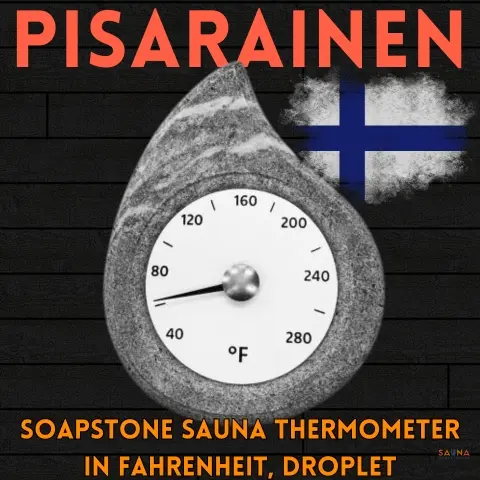
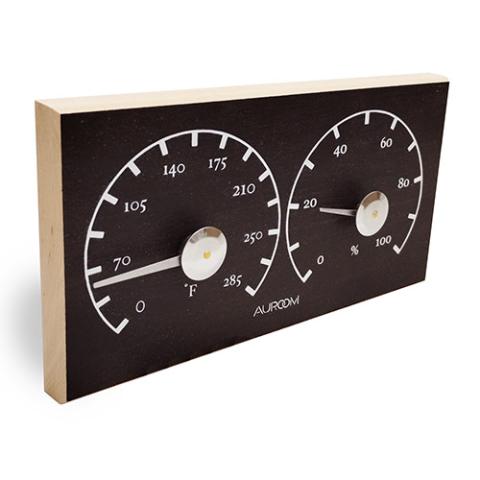
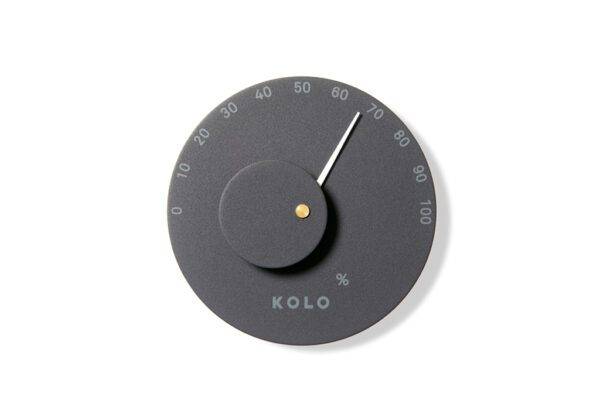
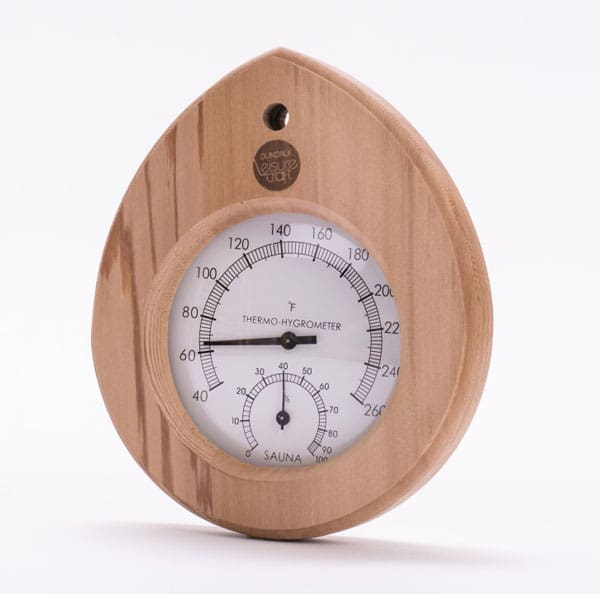
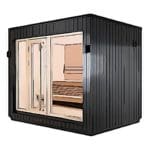 Prebuilt
Prebuilt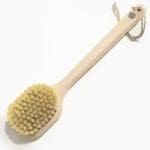 Sauna Brushes
Sauna Brushes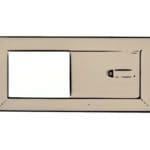 Vents
Vents